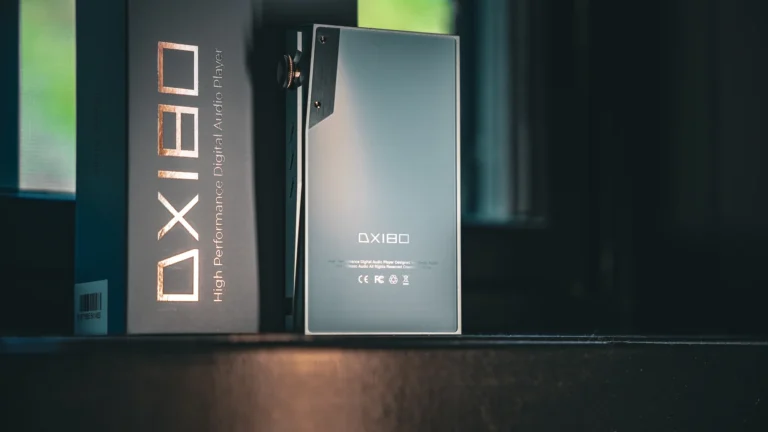FiiO E10K TC Review

The FiiO E10K TC, an upgraded version of the company’s renowned USB DAC/Amp, is examined in detail today.
About FiiO
An introduction is not necessary for FiiO. Everyone is familiar with them. You don’t? You can then visit FiiO’s website by clicking this link. Almost everything related to portable audio is now produced by them. I personally admire their work, and they strive to be competitive in every industry in which they operate. It has been one of the few businesses that hasn’t raised their pricing to Mount Rushmore yet, to be honest.
About FiiO E10K TC
The E10K model, one of FiiO’s most notable units in the past, is now available in its new 2021 version. You may remember the E10K as the “Olympus 2” at the time. We have a long relationship with the unit dating back to 2011! The original E10 DAC/Amp was evaluated ten years ago.
One of the best price/performance combinations in the brand’s history is the E10 model. I’m holding the most recent version right now, which has a new Type C USB port. The XMOS XUF208 USB decoding chip, an improved PCM5102 DAC, and a redesigned amp section for a higher noise floor are additional upgrades. PCM is now supported up to 32 bit/384 kHz sampling rates, and the USB Audio class has been upgraded to 2.0 from the original E10K.
Like its predecessors, the gadget features amp gain and bass boost switches. Nothing new, then. Despite its age, it remains a basic all-in-one option for beginning audiophiles in the hobby because the price is still under $100.

Package, Design & Build Quality
With the exception of the cardboard printing, the E10K TC’s box is not newer than that of the preceding generation. The new box has a sleeker appearance and is now completely black. It’s essentially the same narrative because the cardboard box still contains the same interior design and accessories when you open it.
Everything is the same as the previous model in terms of design. Based just on the unit, it is impossible to determine whether this is the E10K TC model. Actually, the identifier still reads E10K, and the Olympus 2 name is still printed on the device’s bottom. Checking to see if the device has a Type C USB connector is your only option. That distinction isn’t even present in the FiiO New K3. FiiO probably didn’t even bother to alter the unit printings in order to streamline the manufacturing process. However, the box is marked as “Type C.”
Additionally, the design is identical. It is exceedingly light in the hand, very small, and rectangular. The K3’s design is more appealing to me, but this one is also highly sensible and goal-oriented. To be honest, I don’t see any justification for altering this iconic design, thus I believe FiiO made the right choice in that regard.
The 3.5mm headphone output is located at the front. Adjacent to the volume pot is the bass switch. The USB Type C port and the gain switch, which has coaxial and line-out outputs, are located directly on the device’s back.

The construction quality is excellent. The volume knob feels and looks great, and the aluminum enclosure feels quite robust to the touch. The construction is excellent for a gadget at this price, and the same is true of the switches, inputs, and audio output sockets. You may also read the previous evaluations I shared above for additional details about the device’s no-sound features.
Sound Quality
The linear sound presentation of the FiiO E10K TC is well-defined, detailed, and has outstanding resolution. Even if it costs $82, the performance is quite good, demonstrating that FiiO’s little device is still a powerful one. For that budget, the device’s sound performance is excellent, despite its colorless approach, which makes it sound quite lean and “basic.” Considering its size, its output power is really remarkable.
Bass
The new E10K TC’s bass has a flat response and is cautious. The kick and rumble are not as great as the New K3, and the bass is primarily on the mid-bass side. Despite its great resolution, neatness, and control, it occasionally comes across as shallow and “empty.”
The nicest thing, though, is that this kind of bass has no color and is quite accurate to the recording. For those who prefer reference-based presentations, this could be a good fit. The bass has excellent definition, and the fading is remarkable since it keeps the bass from being dispersed. Overall, the E10K TC does have a really tight bass response.

The bass boost’s increased bass response might help some folks, but like the K3, it just makes the bass sound worse. The result is a boomy, scattered, and erratic bass response. Would I utilize that merely to increase the number of bass? Without a doubt, I would say no. Even though the switch works a little better when using the gadget with full-size headphones, I still would rather not use it.
The new E10K’s bass performance, aside from the switch, is rather quick, but the impact and kick are not very strong. When the switch is closed, the bass sounds really clear, but don’t expect a lot of it. However, some people prefer popular music genres and would want to have more bass.






